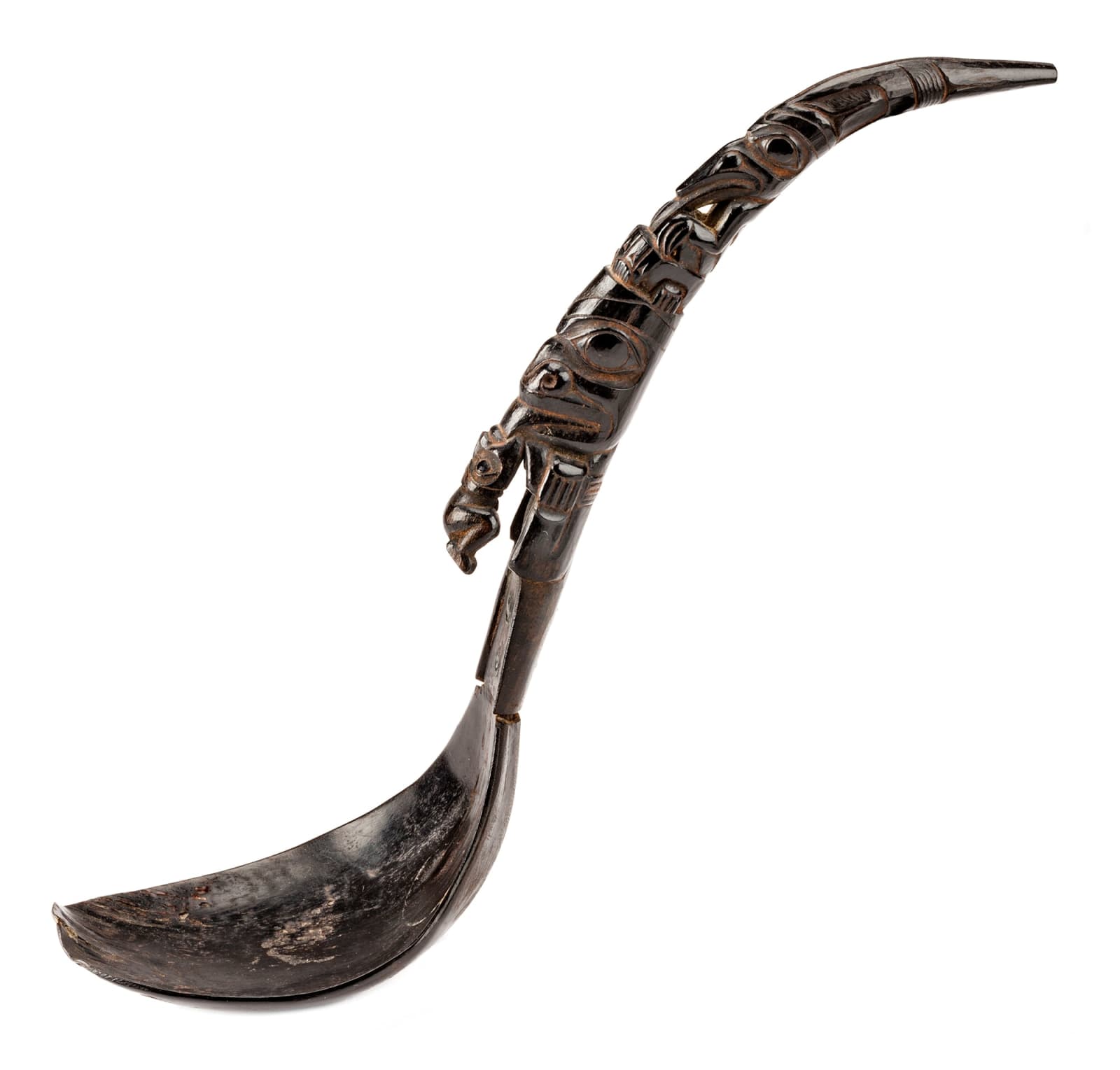-
Artworks
UNIDENTIFIED ARTIST, POSSIBLY HAIDA OR TLINGIT
Feast Spoon, c. 1870s or 1880sgoathorn and metal rivets, 8 x 6 x 3 in (20.3 x 15.2 x 7.6 cm)
unsigned.
LOT 24
ESTIMATE: $3,000 — $5,000
PRICE REALIZED: $5,040.00Further images
Mountain goat horns were adaptable to both roles in creating spoons like this one: one horn for the sculpted handle and another (not necessarily in pairs) for the bowl of...Mountain goat horns were adaptable to both roles in creating spoons like this one: one horn for the sculpted handle and another (not necessarily in pairs) for the bowl of the spoon. A slim horn with an even taper was appropriate for handle carving, but would not make as wide a bowl as a larger diameter horn, even if it had a more extreme taper. To make the bowl involved cutting a horn open, trimming the squared-off bottom to a rounded end, boiling the horn to soften and make it bendable, and spreading out the sides into a wide, shallow bowl as the tip raised up. Final trimming made the bowl horn ready to be fitted inside the handle horn and fastened with horn rivets or pegs.
When soaked in water, the horn material responded well to carving, like smooth dense wood. This spoon handle is carved with two primary figures. The slim tip has been left much as it was, with only a series of tightly packed rings carved around the circumference. The upper creature appears to be a slim-headed bear, seated with its head turned down and its tongue extended. Its forelegs are bent at the elbow and the front feet are resting on its unseen knees. The hind feet protrude from the ears of the bear below, much larger due to the increasing taper of the horn. A kind of crown made up of formline U-shapes rises between its ears. This bear has large spiral nostrils and its tongue extended, its forefeet drawn up to its shoulders. Holding onto its tongue is a small bear cub, its body cut away from the rest of the horn at the open end. The back of the horn extends on down and is riveted to the bowl horn in that area. Numerous examples of ingenious horn work like this were made on the northern coast and traded between First Nations. Raw horns were also traded widely, as mountain goats are not native to the islands of Haida Gwaii, the only source being from mainland groups like the Tlingit and Tsimshian.
Steven C. Brown
References: For information on the crafting of Tlingit spoons see, G. T. Emmons, The Tlingit Indians, (Seattle: University of Washington Press, 1991), p. 173. See also Anne-Marie Victor-Howe, Feeding the Ancestors: Tlingit Carved Horn Spoons, (Cambridge: Peabody Museum Press, 2007).
Provenance
Important Private Collection, Canada.
Join our mailing list
* denotes required fields
We will process the personal data you have supplied in accordance with our privacy policy (available on request). You can unsubscribe or change your preferences at any time by clicking the link in our emails.








